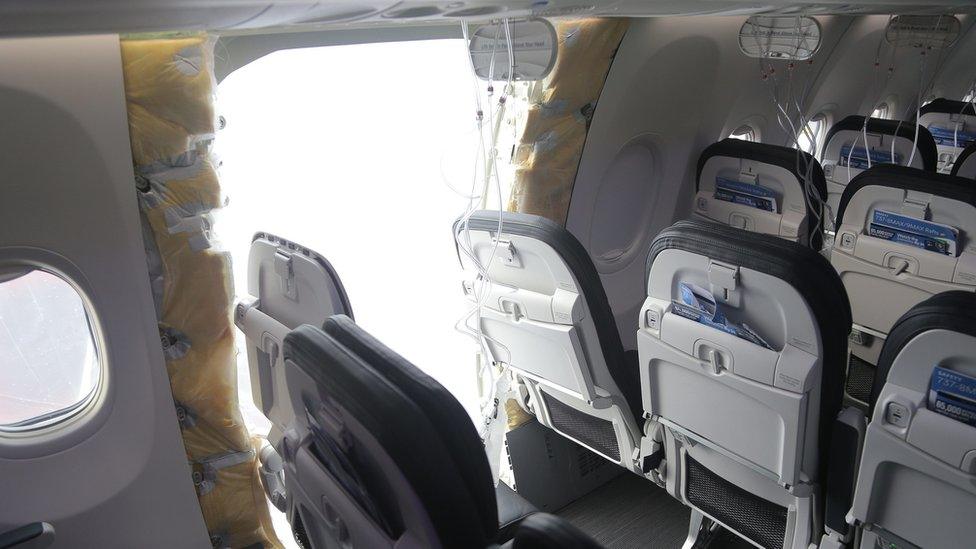Boeing's mid-air blowout puts safety record in spotlight again
- Published
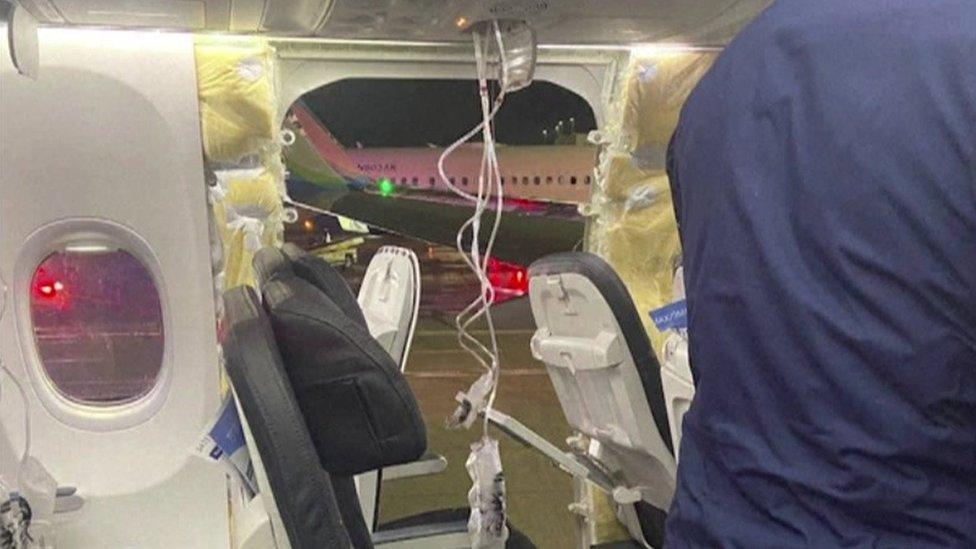
An unused door blew off a Boeing plane last week
"I see greatness in this company, but I also see opportunities to do better. Much better."
These were the words of Boeing chief executive David Calhoun on his first day in the job, back in January 2020.
He was appointed in the aftermath of two tragic crashes involving Boeing's newest and fastest selling airliner, the 737 Max, in which 346 people died.
Four years later, Boeing is facing an investigation from the US regulator, the Federal Aviation Administration, for potentially having failed to ensure its aircraft "were in a condition for safe operation".
The company will also be subjected to increased oversight and new safety assessments, following a clampdown announced by the new head of the FAA, Mike Whitaker.
The credibility of the aerospace giant, and its boss, are on the line following another serious incident involving an airliner from the 737 Max family.
No-one was seriously hurt when an unused door blew off an Alaska Airlines 737 Max 9 last week shortly after take-off. But it could have been much, much worse.
Inspections have already revealed loose bolts and fixings on other planes of the same specification - raising questions about the way they were built.
Mr Calhoun told staff this week that Boeing would acknowledge its "mistake" and would approach the investigation with "100% and complete transparency".
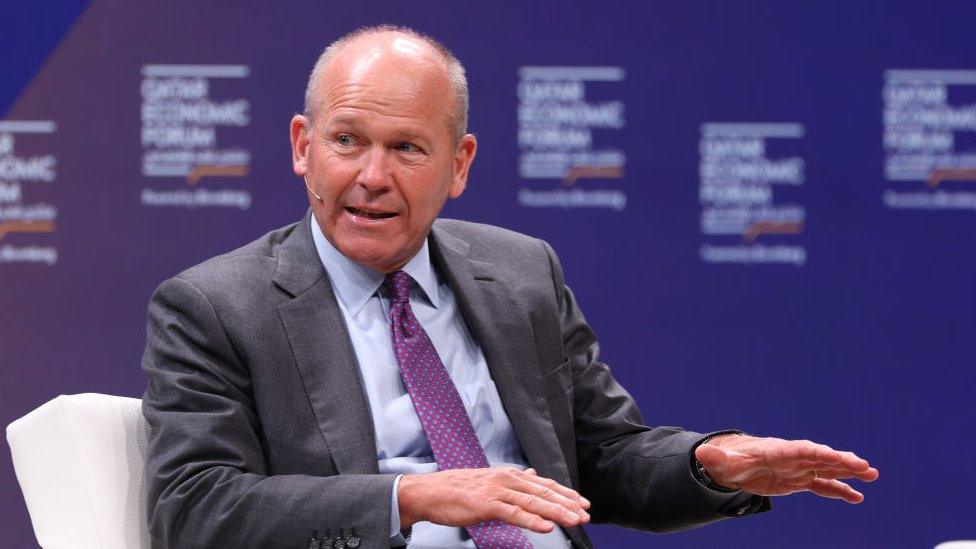
David Calhoun has been chief executive of Boeing for four years and has pledged the company will "do better"
That mistake has cast a harsh spotlight on Boeing's commitment to safety and the performance of the 737 Max itself.
In commercial terms, the aircraft has been a clear success. Some 1,370 have been delivered to customers so far, and another 4,300 are on order.

Every passenger's worst nightmare: the terrifying moment a plane door rips away mid-air.

The aircraft is popular with airlines because it is much more efficient than the previous generation of 737, has low running costs, and offers an alternative to Airbus's rival A320 neo.
But behind the scenes, there have been serious problems, including manufacturing defects affecting parts of the fuselage, tail and rudder assembly, as well as sealants applied as protection against the effect of lightning strikes in the central fuel tank.
Some of these flaws were attributed to Boeing's supplier, Spirit AeroSystems. The Kansas-based company builds major parts for the 737 Max, including fuselages. It also produced the door that fell off the Alaska Airlines plane.
A shareholder lawsuit lodged late last year accused the company of deliberately attempting to cover up serious defects.
Spirit says it "strongly disagrees" with those assertions and insists it will "vigorously" defend itself against the claims.
"Ultimately, the buck stops with Boeing," says Bjorn Fehrm, aeronautical analyst with Leeham Co.
"When they build the fuselage and put in the interior, the insulation, the walls and so on, they are obliged to check that the supply from Spirit is correct. The quality assurance has to be made by Boeing."
Concerns have also been voiced about the number of malfunctions that have occurred on aircraft in service.
Publicly available information shows that by September last year, US carriers alone had reported more than 1,300 faults on 737 Max planes.
Although some of these were relatively minor, there were also potentially serious problems with flight management computers, autopilots, engines and other critical systems.
The Foundation for Aviation Safety, a group led by former Boeing manager and whistleblower Ed Pierson, has been analysing the data. It says it finds the reports "troubling, and the industry's complacency towards them even more disturbing".
It claims that because the planes have been operating for a relatively short amount of time, "the overwhelming majority of these reports point directly to production quality defects".
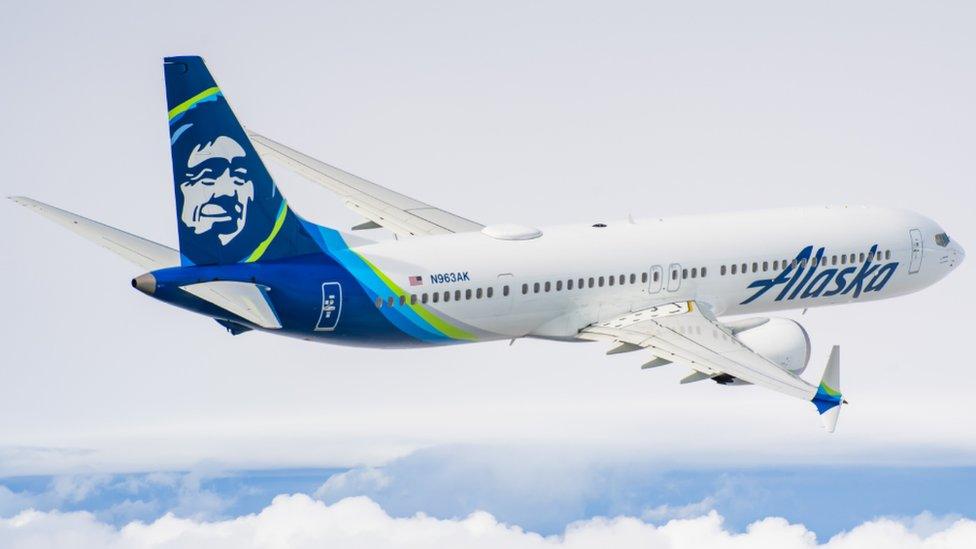
The most recent incident involved an Alaska Airlines 737 Max 9, such as this one
"I do think there is a fundamental cultural problem at Boeing," says Mary Schiavo, a former inspector general of the US Department of Transportation.
"They just don't realise how vulnerable they are to these kinds of quality control problems, and that jeopardises safety around the world where these planes operate."
Over the past five years, Boeing has repeatedly stressed its commitment to putting safety at the heart of its operations.
When asked about the quality control issues, and its safety culture, a company spokesman referred the BBC to Mr Calhoun's comments this week, external, in which he pledged to co-operate with investigators and regulators "to ensure all the procedures are put into place, inspections, all the readiness actions that are required to ensure every next airplane that moves into the sky is in fact safe and that this event can never happen again".
In the wake of the two previous accidents involving the 737 Max, off Indonesia in late 2018 and in Ethiopia in 2019, Boeing admitted misleading regulators and concealing information about the aircraft's safety. It avoided prosecution by agreeing to pay fines and compensation worth $2.5bn (£1.8bn).

Nadège Dubios-Seex, pictured with her husband Jonathan and their three children shortly before Jonathan left to take the Ethiopian Airlines flight to Nairobi
Relatives of those who died aboard the Ethiopian plane say the latest incident suggests little has changed at the company in the past five years.
Nadège Dubios-Seex lost her husband Jonathan in the crash, leaving her to bring up three children alone.
"They absolutely haven't learned anything," she says. "Nothing has been done. We're still in the corporate culture that's putting defective products out there."
Zipporah Kuria, whose father Joseph Waithaka was killed in the same accident, agrees.
"I don't think Boeing has changed. I think this incident is a marker and an indicator of lack of change," she says. "They say history repeats itself when we fail to learn from it - and here we are yet again."
Against this background, Boeing has been working hard to get two new versions of the 737 Max, the relatively small Max 7 and the much larger Max 10, into service.
In order to do so, it has requested a temporary exemption from safety rules recently introduced to prevent anti-icing systems from causing potentially catastrophic damage to engine inlets.
Such an exemption would leave the new planes in exactly the same situation as existing 737 Max models, which are already obliged to use their anti-icing systems in a restricted manner to avoid problems occurring, but are otherwise able to operate normally.
However, if the Alaska Airlines affair prompts regulators to take a harsher line with the company, experts say Boeing may find it harder to get the exemption it wants, potentially delaying the introduction of the new models.
That is just one extra headache facing the chief executive, as he attempts to deal with the aftermath of last week's incident.
So has Mr Calhoun lived up to his promises to make Boeing "better"?
"I think he's tried," says analyst Bjorn Fehrm. "There is change at Boeing. But over the past five years we are only seeing the result of two and a half decades of mismanagement. To come back and rebuild a culture… is a long process."
- Published12 January 2024
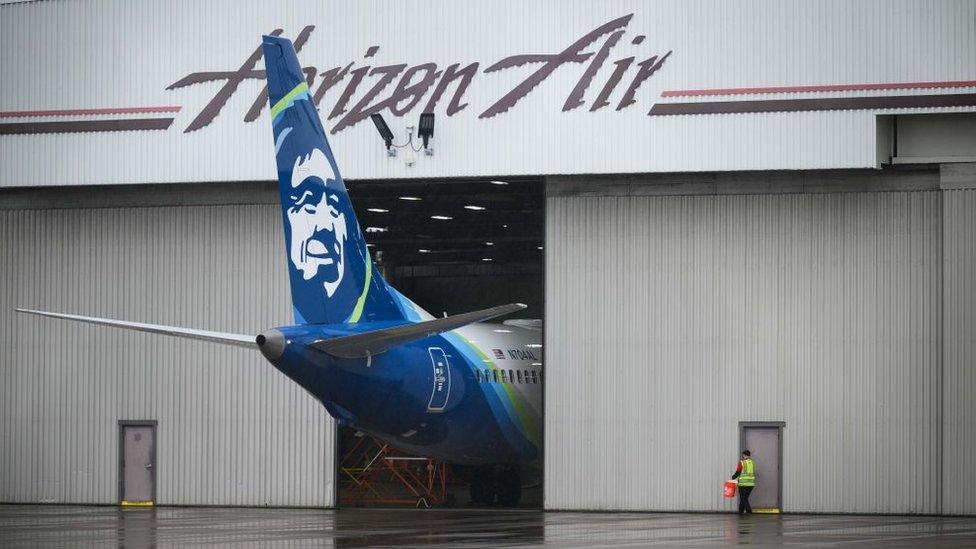
- Published11 January 2024
